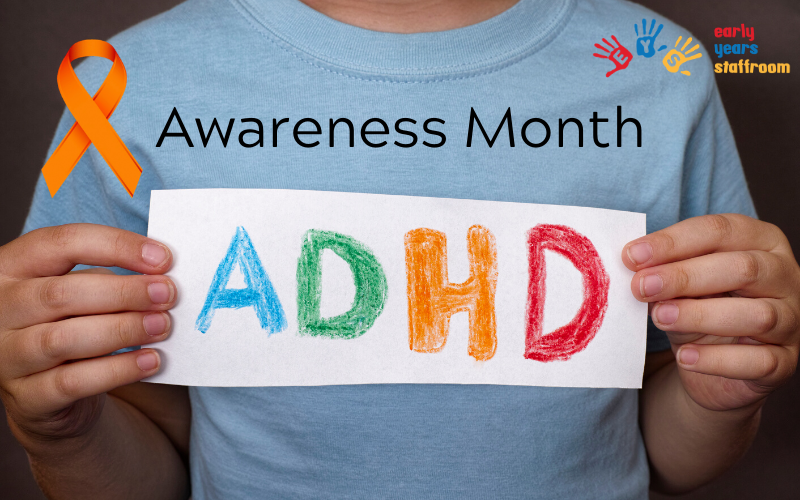

ADHD (Attention Deficit Hyperactivity Disorder) Awareness Month is typically celebrated in October and aims to raise awareness about the condition, promote understanding, and support those affected by ADHD.
In an early years setting, it is important to acknowledge ADHD Awareness Month to help educators, children, and parents recognise the signs, support children with ADHD, and create a more inclusive environment.
Here are some ideas for ADHD Awareness Month :
Circle Time Discussion: Talk about differences in learning styles, personalities, and abilities in an age-appropriate way. Emphasize the importance of respecting and supporting each other’s differences and helping one another succeed.
Staff Training: Provide opportunities for staff to attend professional development workshops or training sessions related to ADHD and inclusive teaching practices. This will help educators better understand and support children with ADHD in the classroom.
Parent Involvement: Share information with parents about ADHD Awareness Month and the activities you have planned. Encourage them to continue the discussions at home and to support their child’s unique learning needs.
Calm Corners: Create calm corners or quiet spaces in the classroom where children can go if they need a break or time to refocus. These areas can be equipped with soft seating, noise-cancelling headphones, or fidget tools to help children self-regulate.
Information Sessions: Provide resources and information for educators and parents about ADHD, its symptoms, and strategies for supporting children with ADHD in the classroom and at home. This can include brochures, fact sheets, or hosting workshops with guest speakers who specialize in ADHD.
By celebrating ADHD Awareness Month in your early years setting, you can promote understanding, empathy, and inclusivity while fostering a supportive environment for all children, including those with ADHD.